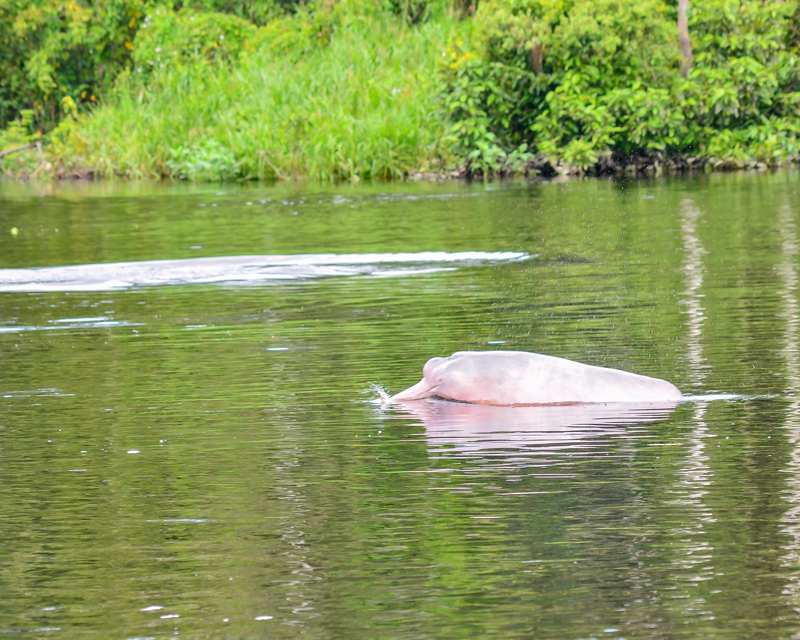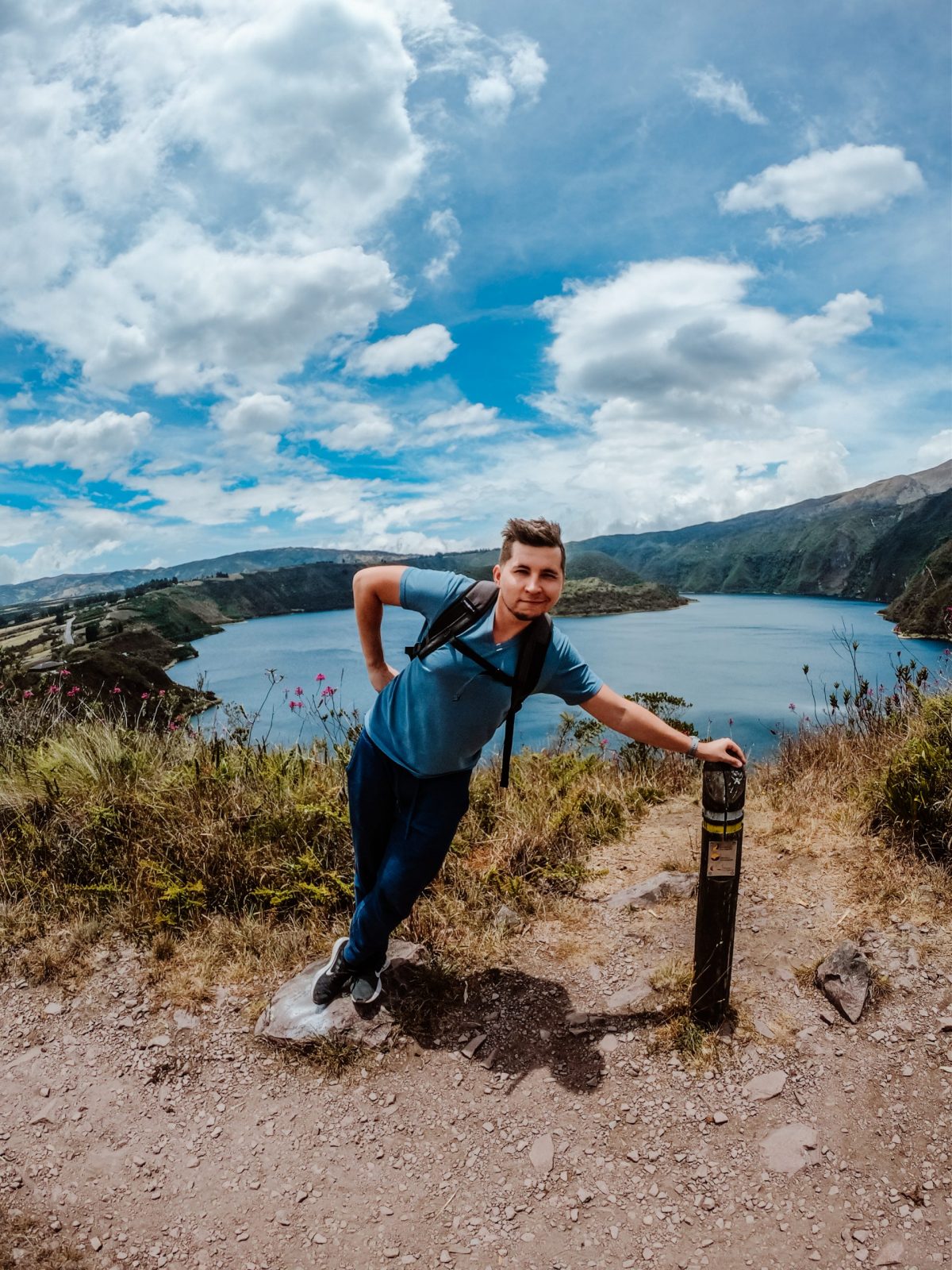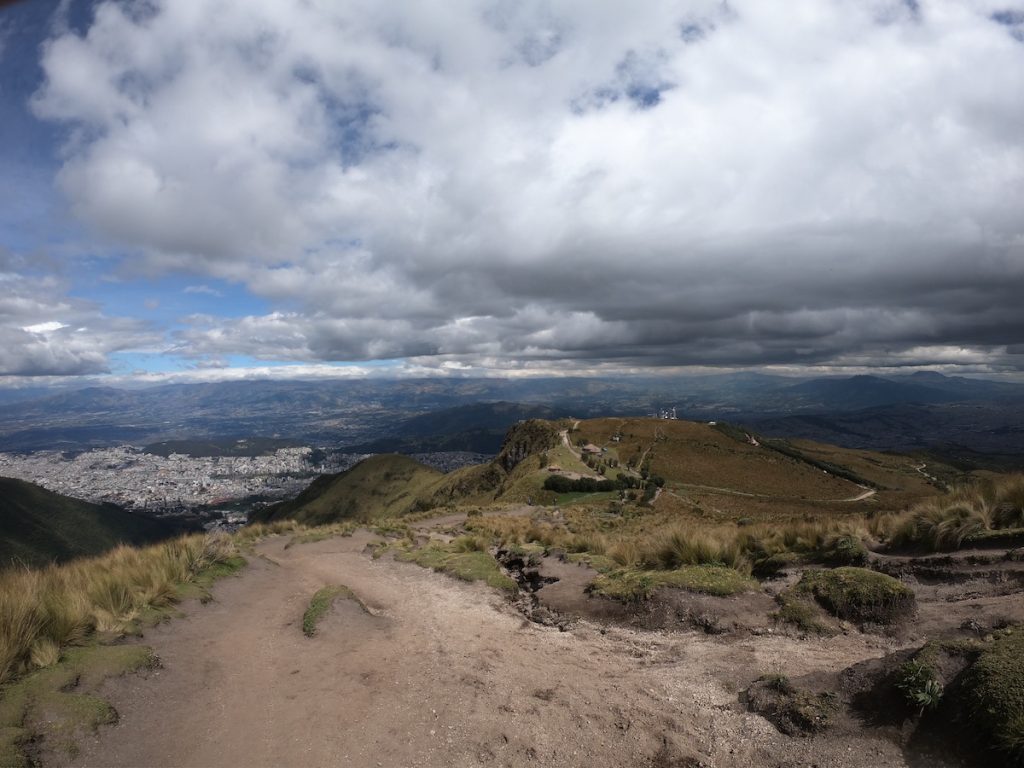What are Pink Dolphins?
The pink dolphin, also known as the Amazon River dolphin, is one of those rare creatures you’ll only find in South America. What fascinated me the most about these dolphins is their incredible story of adaptation. Millions of years ago, when the Andes Mountains began to rise, some ocean dolphins found themselves trapped on the eastern side of the range. Over time, they evolved to thrive in the Amazon Rainforest, adjusting to the unique environment.
During our trip, we learned how widespread these dolphins are across six countries: Bolivia, Brazil, Colombia, Ecuador, Peru, and Venezuela. While we were exploring the waterways of Yasuni, it became clear just how well these creatures have adapted to life in different habitats. They’re not just found in the main rivers; they navigate everything from river basins and lakes to the areas around rapids and waterfalls.
One thing that struck us was how the dolphins move with the seasons. In the dry season, they tend to stay in the main river channels, but when the rains come, they shift to smaller tributaries and even flooded forests. It’s almost as if they follow the rhythm of the Amazon itself, flowing through the landscape just as naturally as the waters that sustain them.
Finding Pink Dolphins

We were eager to catch a glimpse of the elusive pink dolphins during our journey through Ecuador. However, what we didn’t realize was just how rare and special it is to find these creatures in the wild. Pink dolphins, despite their enchanting presence, are facing increasing challenges in the Amazon. Factors like water pollution and dam construction are putting them at risk, and they’ve been officially classified as an endangered species.
During our visit, we learned that the Pañacocha Lagoon is one of the few places near Yasuni National Park where these dolphins can be consistently spotted. The anticipation of visiting such a significant habitat made our journey even more meaningful. Knowing that these magnificent animals are fighting for their survival added a layer of urgency and appreciation to the experience. It wasn’t just about seeing the dolphins but understanding the delicate balance of the ecosystem they inhabit.
Pañacocha Lagoon, nestled between Yasuni National Park and Cuyabeno Wildlife Reserve, is a serene network of blackwater lagoons and rivers. This tranquil sanctuary is one of the best places to spot endangered pink dolphins in their natural habitat. The calm, dark waters and lush surroundings create a magical setting, making each dolphin sighting feel even more special. Visiting Pañacocha felt like stepping into a hidden corner of the Amazon, where nature’s beauty and fragility coexist.
Our guide warned us that spotting a pink dolphin would be rare, but we decided to take the chance. Despite the long boat ride to Pañacocha Lagoon from our lodge, the possibility of seeing these elusive creatures was too enticing to pass up.
As we made our way through the waterways, the guide shared fascinating details about these dolphins. They tend to swim in muddy waters, and their greyish-pink hue acts as perfect camouflage. Unlike other dolphins, they are quite solitary, often seen alone or with their young. Learning about their elusive nature made the journey feel like a real-life treasure hunt in the Amazon.
Unlike ocean-dwelling dolphins, pink dolphins don’t leap out of the water or follow boats. My wife and I learned that when they do come up for air, only a small part of their blowhole and head breaks the surface. They resurface every 30 seconds but move slowly, making them difficult to spot in the fast-moving currents of the Amazon River.
Although we didn’t have the luck of seeing a pink dolphin, the tour turned out to be a memorable experience in other ways. My wife enjoyed identifying the different bird species, and we both found the tranquility of the river quite peaceful. Our guide shared that in ten trips, he had only spotted pink dolphins twice, which made us appreciate the rarity and mystery of these creatures even more. The excitement of searching for them, despite the odds, added a sense of adventure to our journey through the Amazon.
Tales of Pink Dolphins
While we didn’t get the chance to see the pink dolphins, we did hear plenty of fascinating stories about them during our trip. Our guide shared that the Amazon river dolphin is deeply rooted in local myths and legends among the indigenous communities of the Ecuadorian Amazon.
One legend that stuck with us was about a young indigenous warrior who, out of jealousy from an ancient god, was transformed into a pink dolphin and condemned to live in the rivers and lakes. The story added a sense of mystery to these elusive creatures, making them feel almost mythical.
Another tale we heard was about how, on full moon nights, the pink dolphins are believed to transform into handsome men. They supposedly emerge from the water to flirt with the women in nearby communities. My wife and I couldn’t help but smile at the imagery of these tales, feeling as if we were getting a glimpse into the soul of the Amazon. These stories gave our journey a new dimension, deepening our appreciation for the culture and folklore that surrounds these enigmatic dolphins.
Like us, you might not see pink dolphins on your first try, but the journey through Ecuador’s Amazon is unforgettable. Get a FREE personalized itinerary from local experts who understand both wildlife patterns and conservation. Your quote request supports this blog and helps protect Ecuador’s amazing biodiversity!
Ecotourism and Conservation
Ecotourism has emerged as a powerful way to raise awareness about these incredible pink dolphins and contribute to their protection. During our trip, we saw firsthand how well-managed tourism can provide essential economic incentives for local communities to safeguard their environment and its unique wildlife. It was clear to my wife and me that such initiatives not only support conservation efforts but also help visitors, like us, understand the delicate balance of this ecosystem and the urgency of preserving it.
Several organizations are dedicated to conserving the Amazon’s pink dolphins, working tirelessly to mitigate threats and develop sustainable solutions. For us, choosing responsible tourism was a small yet meaningful step towards supporting these efforts. By being mindful travelers and supporting initiatives that aim to protect these dolphins, we felt we were contributing, even in a small way, to the preservation of their habitat and future.

Planning trip to Ecuador?
My wife and I rented a car for 15 days and traveled from the northern part of Ecuador to the south, visiting amazing cities like Quito, Otavalo, Baños, Cuenca, and Guayaquil. Along the way, we explored iconic places such as Cotopaxi National Park, Quilotoa Lake, and many more breathtaking destinations.
Not many blogs cover traveling in Ecuador in detail, so I spent nearly three weeks creating this comprehensive Ecuador travel guide based on our trip. It’s packed with everything you need to know, and honestly, I consider it the best free travel guide about Ecuador out there.
If you’re planning a trip to Ecuador, don’t forget to use my link for discounted hotel prices through Booking.com. It’s a great way to support my blog while saving money on your accommodations!
Conclusion
The Pink Dolphins of the Amazon in Ecuador remain an enchanting symbol of the region’s ecological identity. Although sightings are rare, their presence in places like Pañacocha Lagoon near Yasuni National Park offers a hopeful chance for curious travelers.
Even though we weren’t lucky enough to see these graceful creatures ourselves, the experience left us with a newfound appreciation for the delicate balance of this ecosystem. It reminded us of the importance of protecting such unique wildlife and their habitats.
By supporting conservation organizations and making responsible choices as travelers, we can all play a part in preserving these remarkable pink dolphins and the fragile environment they call home.
Plan perfect trip to Ecuador & Galapagos
I spent countless hours researching everything about traveling to Ecuador, and I created this blog for fellow travel enthusiasts who want the best, most reliable information. But if you want to save time, we’ve partnered with the top local agency to plan your dream trip.



